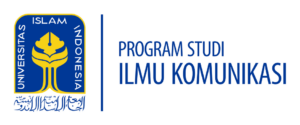History of the Communication Department at the University of Indonesia: Unofficial History from Ignatius Haryanto (2)
Continued from previous writting entitled History Of UI’s Communication Dept.
Haryanto managed to collect UI Communication Department data from various sources. For example the data of Professor of Communications at UI and his dissertation, changes in names and faculties, and keenly seeing the tendency of social sciences in Indonesia due to the tight supervision of the Soeharto New Order.
In the discussion via zoom conference video application also emerged several new facts that were completed from the participants who were mostly speaking as UI academics. For example Ade Armando, Pinckey Tri Putra, Nina Muthmainnah. There are also I Gusti Ngurah from UGM, Masduki from Communication Science Department of UII and others.
“This is a preliminary search. It only opens doors and hopefully my talk will provoke other campuses to also explore the same data so we can see,” Haryanto said.
Other facts, for example, “Why does UGM only have one professor / professor? I haven’t checked further. Hasanuddin University (unhas) has at least quite a lot. This means it’s interesting, Unhas is younger, there are already many professors. UGM is older, how come I only have two professors? “Is this administrative or what? UGM should answer.” said Haryanto. “UI even though it is younger, but has 12 professors. Why? Let’s examine it further,” he said.
I Gusti Ngurah answered, as a UGM lecturer, this fact could have happened because of stagnation in the 80s. At that time the Chair of the UGM Communication Department was stagnant. He served too long and many lecturers did not continue their studies. It was only in the late 80-90s that a new generation of renewed spirits emerged.
Is There Indonesian School of Communication?
Masduki from Communication UII also asked, “as far as observation until now, whether the phenomenon of two academic camps in UI: positivist-empirical-quantitative developmentalist vs. critical-normative-qualitative in the last twenty years and then productively produced a scientific synthesis / approach this new study of communication that is uniquely Indonesian or continues as an open or latent scientific confession? ”
There is no final answer. But Pinckey Tri Putra tried to answer. He said, until now there has not been
the formulation as mentioned by Masduki as a typical Indonesian scientific communication study at UI. The UI is still far away, he said. He still continues to process and develop. According to him, this process has not yet found anything unique to Indonesia.
Yus Ariyanto, one of the participants, also asked. “It seems that (almost) all UI communication professors were born from publicist / mass communication” wombs. What’s with the realm of public relations or advertising? ” he asked.
“In the early 1980s, there was a specialization in Public Relations, Advertising. Mass Communication, and Development Communication. Then Development Communication was abolished. Later the interest in Journalism developed. Mass Communication turned into Media Studies,” Nina said. He, and Haryanto wanted to say, that this could have happened because there was a great influence on the thoughts brought by his lecturers. For example, earlier explained the great influence of Prof. Dedy Nur Hidayat with his critical thinking.
Historical Research and Reading Archive Guide
In this study of the history of communication, it can follow a very basic guide. Luthfi Adam, speaker of the first session of the AES Forum said, we can use a very basic historical research guide through a book by Mary Lynn Rampola entitled “A Pocket Guide to Writing in History.”
As for the guide to reading the archive, “you can use the book” Allure of the Archive “by Arlette Ferge. If the guide is conducting research on humanities try to check” How to Write a Thesis “by Umberto Eco,” explained Lutfi in the Zoom Chat feature. He at last tries to complete the discussion the research of history of communication.




